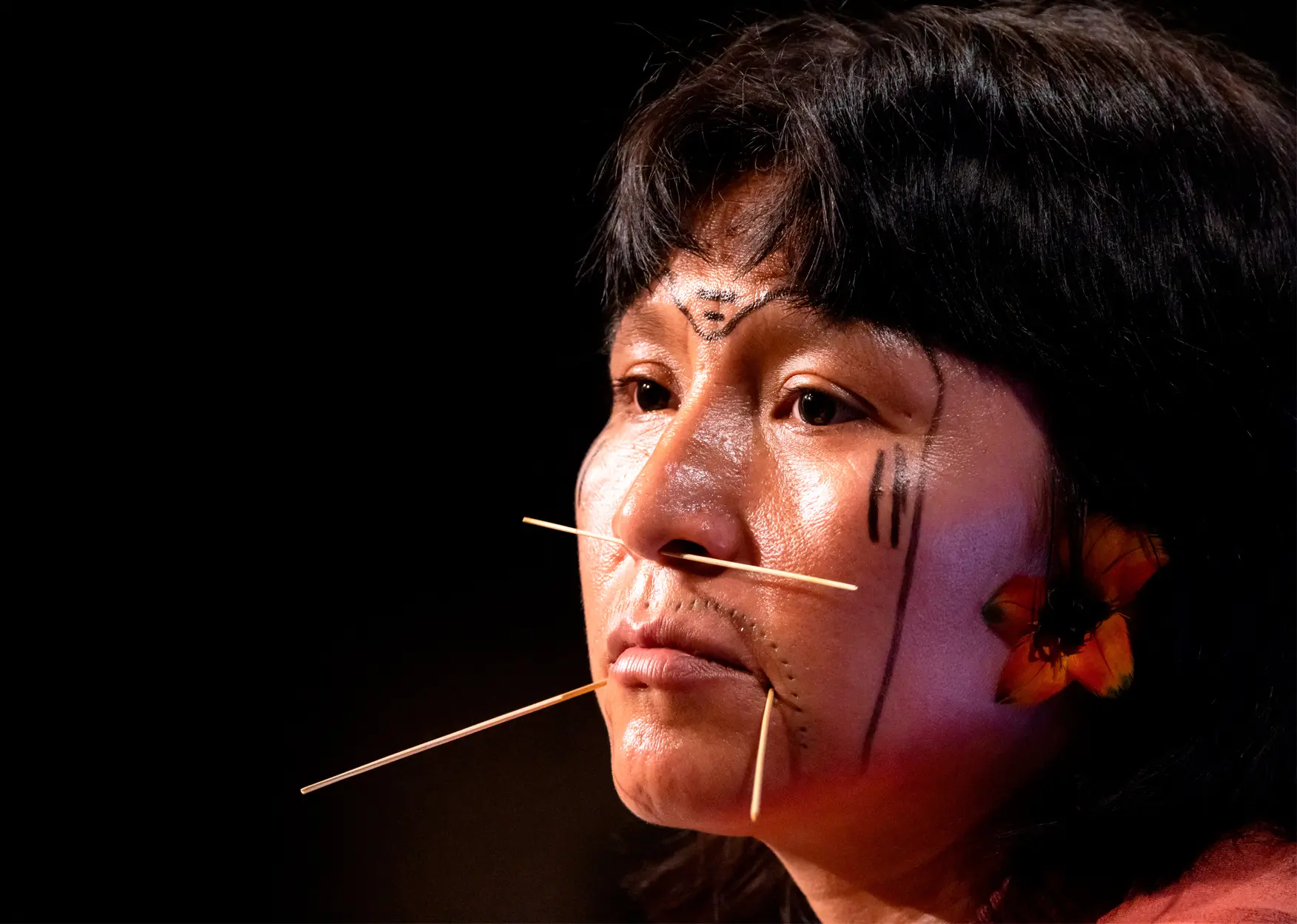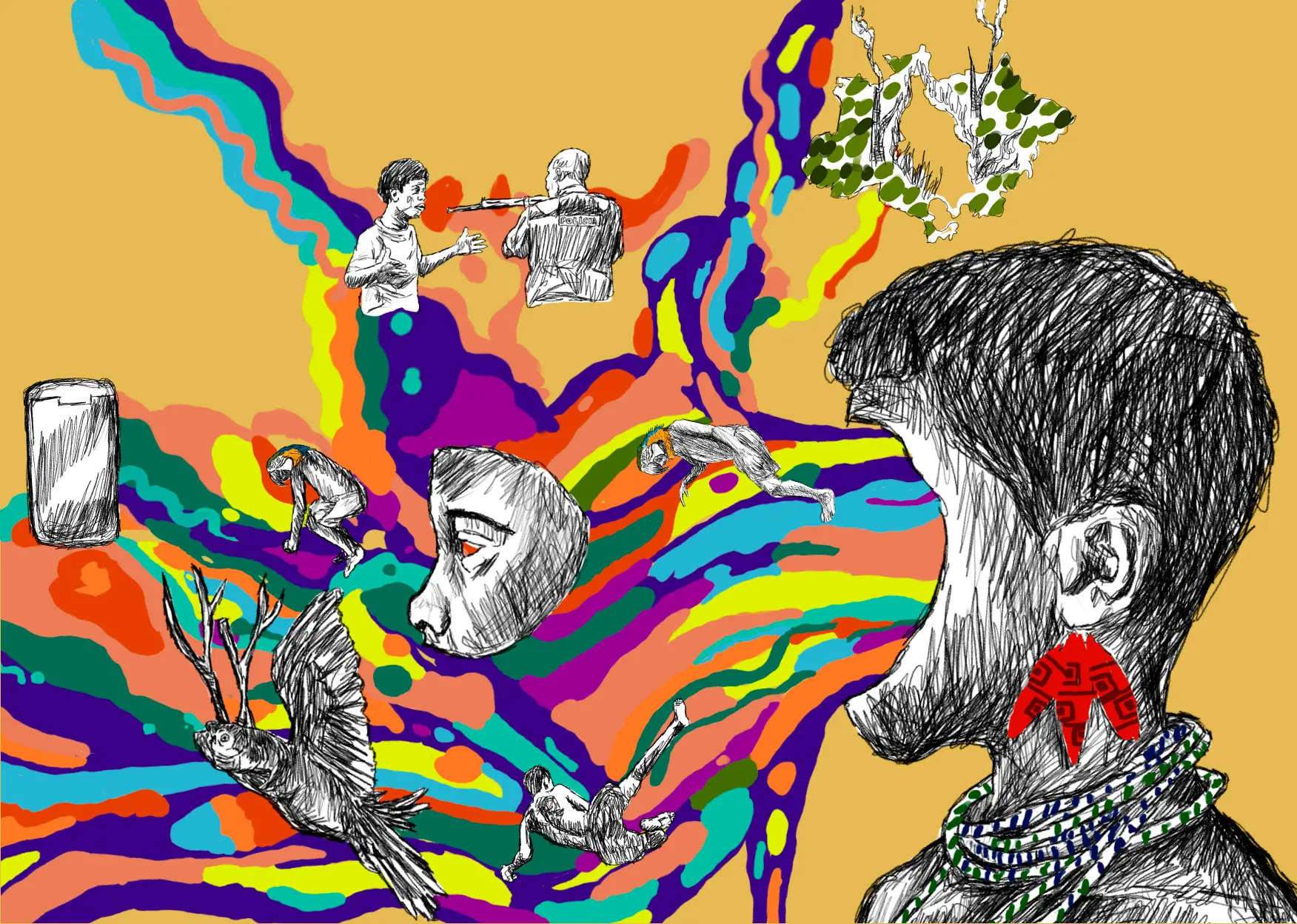They are majestic. Side by side, the three gigantic sumauma trees (also known as kapok) form an impressive green mountain that seems to want to embrace the arid city. If they had hands, they could wrap their bodies around the neighborhood of Asa Branca, in Boa Vista, Roraima’s state capital, and comfort its sad gray asphalt and high walls topped with barbed wire. They have been there for some 50 years, they are home to and they connect with various other non-human beings. They were there when the neighborhood began and they saw it grow up around them. But now they have been sentenced to death on the grounds that they are “threatening” human lives.
The three kapoks, each standing about 30 metres, are part of one of the most important species in the Amazon. Located on land belonging to the Estrela do Oriente Spiritist Center, they can be culled because the owner has asked the city’s government for authorization to “remove them”. Permission was granted despite experts refuting the arguments underpinning the permit.
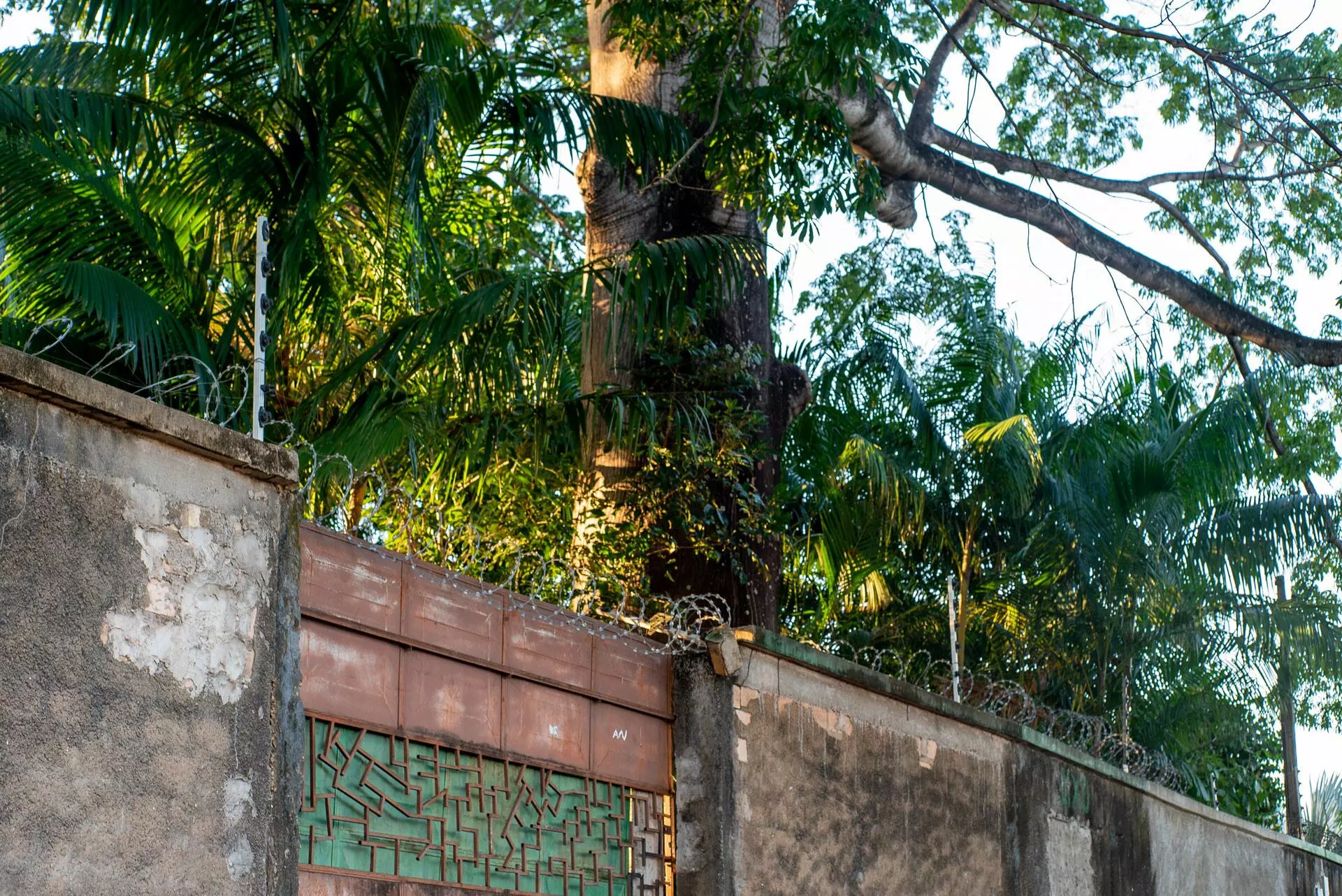
The trees accused of threatening human lives are surrounded by a wall and stand on land belonging to a Spiritist Center. Photo: Adriana Duarte Bencomo/SUMAÚMA
The trees are located along the banks of the Pricumã River. As the neighborhood grew, this small stream was channelized and it now carries a large amount of wastewater.
“Everyone who lives here has a story about the trees. There are older people who would play around them,” says young environmentalist Adriana Feitosa, 24. A resident of Asa Branca, she used social media to organize protests, appealing to the government to keep the trees. An online petition started by social movements in Roraima is collecting signatures to save the kapoks.
Keeping them from being toppled has, however, turned into a battle against public institutions and against a culture where trees are dispensable and replaceable. A permit to fell the trees was issued by Boa Vista’s Office of the Environment Secretary on May 31, 2023. The office agreed with an inspection report submitted by the owner arguing that the trees are at risk of falling. SUMAÚMA made at least four requests by e-mail and two by WhatsApp message for access to the document on which this decision was based, but it was not provided by city managers. The permit to cut down the tree ended up expiring 20 days later, according to the municipal government, but nothing prevents a new permit from being issued.
“What is compromised is the trees’ physical structure. We suggest talking to the owner for more information,” the city’s government responded in a brief statement. The inspection report was signed by agronomist José Beethoven Figueiredo Barbosa, a professor at the Federal University of Roraima (UFRR). When contacted, he did not grant an interview, nor did he share the inspection report.

The man responsible for the inspection report, Professor José Beethoven (wearing sunglasses) says the trees were condemned because they have no heartwood, which experts refute. Photo: Screenshot
Pressure from residents has, nonetheless, forced Boa Vista’s municipal government to make a public statement. A video of the city’s environment secretary, Alexandre Santos, standing alongside Civil Defense workers, circulated on social media late last year. He visited the Asa Branca neighborhood along with a technical team and Barbosa to assess the situation.
The secretary starts by saying, “it is not the role of the municipal government to cut down trees. On the contrary, the role of Semma [Office of the Municipal Environment Secretary] is to preserve the environment.” He then lets Barbosa speak. The professor said the sumaúma lack heartwood, the hardest part inside of the tree. “It’s thick, enormous, heavy, and has no heartwood.” According to Barbosa, this condition means sumaúma are the tree species “that falls most in the Amazon” – a statement that experts say has no scientific basis.
The secretary asks the professor if anything else can be done, like pruning or if there is some type of protection to prevent the trees from dying. But Barbosa is categorical: “The expectation, in a short period of time, is that the branches will fall and, then, so will the kapok.” He states that the kapoks’ branches weigh around 700 kilos, “they are darkened, in decline,” and can kill people or cause an electrical accident if they hit the power lines.
“But why could such a verdant tree fall down?” he asks himself, while he “dances” and simulates the wind with his body. “Because it has no heartwood, it can break. Just one strong wind has to come, from a direction, for example, to which it is unaccustomed. That is what happens in the forest. What we most see are broken kapoks.” The inspection report’s author ends with a prophecy. “We’re not talking about whether it will happen. It’s when.” Residents have commented on the video asking for a second inspection report.

The União do Vegetal Spiritist Center, which is asking to fell the trees, uses plants in sacred rituals. Photo: Adriana Duarte Bencomo/SUMAÚMA
Mysterious inspection report
The justifications presented by Barbosa were contested by two specialists consulted by SUMAÚMA.
“Not having heartwood is the same as saying the tree is hollow. There’s no way to make this kind of affirmation,” says Carlos Eduardo Lucas Vieira, a professor at the Institute of Earth Sciences at the Federal University of Roraima. Vieira, who holds degrees in biology and geology, supports the residents’ movement and has visited the location where the sumaúma live. According to him, the trees appear to be healthy, with well-developed foliation and green leaves.
Vieira wonders why the municipal government and the professional who signed the inspection report refuse to release it. “Up to now, we have no document explaining the scientific details of why the trees would pose a threat to the safety of the residents around them.” The professor say if it is clearly shown that the trees pose a risk, “then they have to be cut down.” “Nobody is crazy enough to say they aren’t and allow a tragedy to happen.”
Gregório Ceccantini, a professor at the Institute of Biosciences at the University of São Paulo (USP), also had some critical technical notes after he watched the video at SUMAÚMA’s request. Ceccantini, who holds a PhD in Botany from USP and was a postdoctoral fellow at the Holbrook Laboratory at Harvard University (Cambridge, Massachusetts), specializes in plant anatomy and morphology, wood anatomy, the biology of parasitic plants, functional anatomy, and the hydraulic architecture of plants. The USP professor reiterates the necessity of accessing the inspection report, for the sake of transparency and to understand what type of analysis was done. Regarding Barbosa’s statements, he points out that “there are serious conceptual errors, of a lack of knowledge of plant morphology, of plant anatomy and of wood anatomy, and of aspects of the structural stability of trees.”
“There are various possible solutions [to avoid removing the trees], and they are not considering any of these solutions. The first mistake is saying that kapoks have no heartwood. Heartwood has nothing to do with the wood being more or less resistant. Heartwood is the non-functional part of the wood that conducts water. It’s a little more resistant than the outside part or alburnum, the sapwood,” he explains.
Three possible technical solutions could prevent removal if the trees are in any way compromised, he points out. “What could be done is pruning to balance the tree, or a type of pruning known as topping, to make it smaller, as well as pruning done in association with guying, which is the installation of steel cables anchored to the ground on concrete pieces, which would prevent any toppling. Pruning reduces the tree’s size and the leverage the wind has on it.”
Ceccantini highlights another unusual statement by Barbosa: “I don’t know where he heard the sumaúma is the tree that falls most in the Amazon. I would like him to show the scientific paper assessing this. It doesn’t exist. It’s a guess.”
Even with well-grounded technical assessments there is still a risk of trees falling, Ceccantini stresses, since climate change has significantly increased wind intensities. “The number of falls in São Paulo, for example, is huge. But that is no reason for us to cut down all the trees preventively. This is wrong.”
Carlos Eduardo Lucas Vieira, with the Federal University of Roraima, points out that the drastic removal of the sumaúmas could have an impact on the region’s climate and eliminate the homes of countless other beings, like native birds and bees.
SUMAÚMA tried to contact the directors of the Estrela do Oriente Spiritist Center. One of the directors stated by WhatsApp message that the owners have “nothing to say on the matter.” Once again, a request for the inspection report was denied.
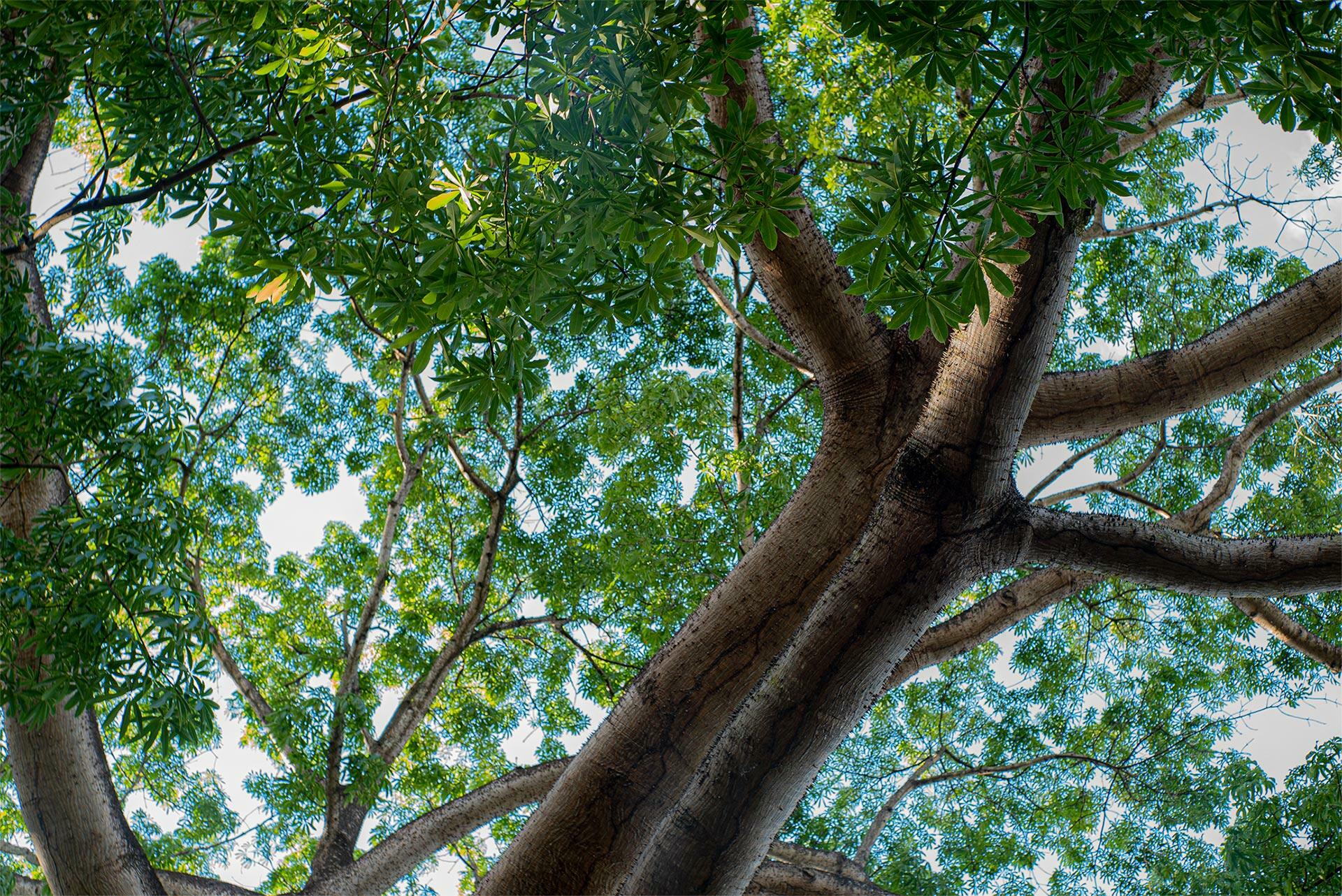
The three sumaumas have seen the neighborhood begin and grow and were part of childhood for its residents, who are now asking for them to remain. Photo: Adriana Duarte Bencomo/SUMAÚMA
Guardians of the city
The spiritist center was the first in Roraima for the União do Vegetal religious group, regarded as a Christian and reincarnationist religion that uses ayahuasca tea in its ceremonies.
For two years, Elda Santos, 30, a researcher studying for her Master’s in Letters, was an attendee of the center and connected with the sumaúmas. Maria, a director at the center who would hold the tea ritual, invited her to see the trees. “I was fascinated by the exuberance of the three sumaúmas.” Elda was saddened by the news they would be cut down. “Those trees, living souls, guardians of this city, are sentinels that work to protect the climate, which is already so debilitated.”
Public defender Jaime Brasil Filho has joined the mobilizations in defense of the trees. “We need to change the existential paradigm, the paradigm of development that we want for the future, because if not, the survival of humankind on this planet will not be viable,” he says. Jaime explains the municipal government could indemnify the property owner and turn the land holding the trees into a park.
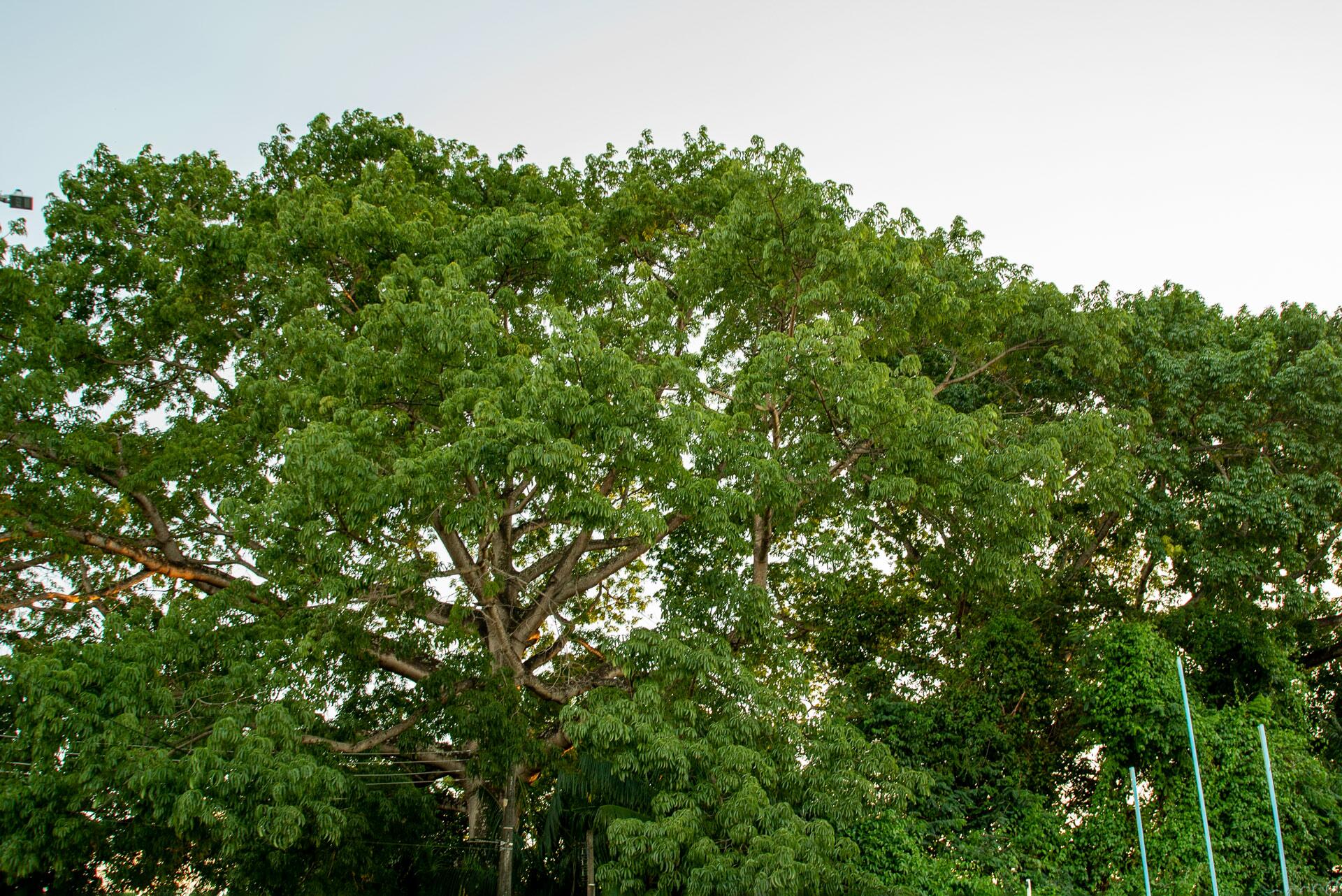
The three tree-people seem to want to embrace the neighborhood that has become hostile to them. Photo: Adriana Duarte Bencomo/SUMAÚMA
In a statement sent to SUMAÚMA, the municipal government of Boa Vista says it does “not remove trees from private areas” – but trees can only be removed when authorization has been granted by the city’s administrators. The only reasons for removal, the city’s government argues, would be if a building or drainage and wastewater pipes were compromised.
With the inspection report having expired, the spiritist center will need to ask for a new permit and a new technical inspection report to fell the tree, according to the municipal Office of the Communication Secretary’s press office.
At the end of last year, the State Prosecutor’s Office for Environmental Defense under the Public Prosecutor’s Office of Roraima asked the city government for information on the sumaúmas. In early January 2024, the case was dismissed. According to the Public Prosecutor’s Office, the municipal government submitted technical reports and the investigation report containing a risk assessment on the trees.
In its dismissal, the Prosecutor’s Office says “the structural order in the three trees is totally compromised, […] with a high risk of damage evident; compromising of the wastewater system and the Pricumã River, imminent risk to human life, because this is a location with heavy foot traffic (religious center), and also a risk to private property.” The Prosecutor’s Office verified that an Environmental Commitment Agreement was signed with the Environment Secretary and the spiritist center “for the kapoks to be removed and for three saplings to be planted with appropriate oversight by the Office of the Environmental Protection Superintendent.” Three saplings that would take at least 50 years to reach this size, if they are able to develop without hindering the humans.
‘The sumauma calls the rain’
Far from Boa Vista, in the middle of the Amazon Rainforest, in Yanomami Indigenous Territory, lives Indigenous leader Davi Kopenawa, the most prominent figure of his people and a tireless defender of the Brazilian Amazon and the forest-earth.
SUMAÚMA invited Kopenawa to visit the trees being threatened with death. “These trees are here in the middle of the city and a person who was elected mayor does not recognize the soul of the sumaúma. The sumaúma is the one who calls the rain, who brings good energy to breathe, to not get sick. These trees are three powers,” said Kopenawa.
In the Yanomami language, the word for sumaúma is warimari. Its leaves are used in Yanomami rituals to ward off and cure illnesses. “The Yanomami people use the strength of the warimari. The ones using the strength of the warimari are the healers, to fight illness or xawara. The healer uses the tree’s strength to get rid of the illness. So, this is serious,” Kopenawa explained.
The three tree-people are awaiting the destiny the humans will determine for them.
Fact-checker: Plínio Lopes
Proofreader (Portuguese): Valquíria Della Pozza
Spanish translation: Julieta Sueldo Boedo
English translation: Sarah J. Johnson
Photo Editor: Lela Beltrão
Layout and finishing: Érica Saboya
Editors: Malu Delgado (news and content), Viviane Zandonadi (editorial workflow and copy editing), and Talita Bedinelli (coordination)
Director: Eliane Brum
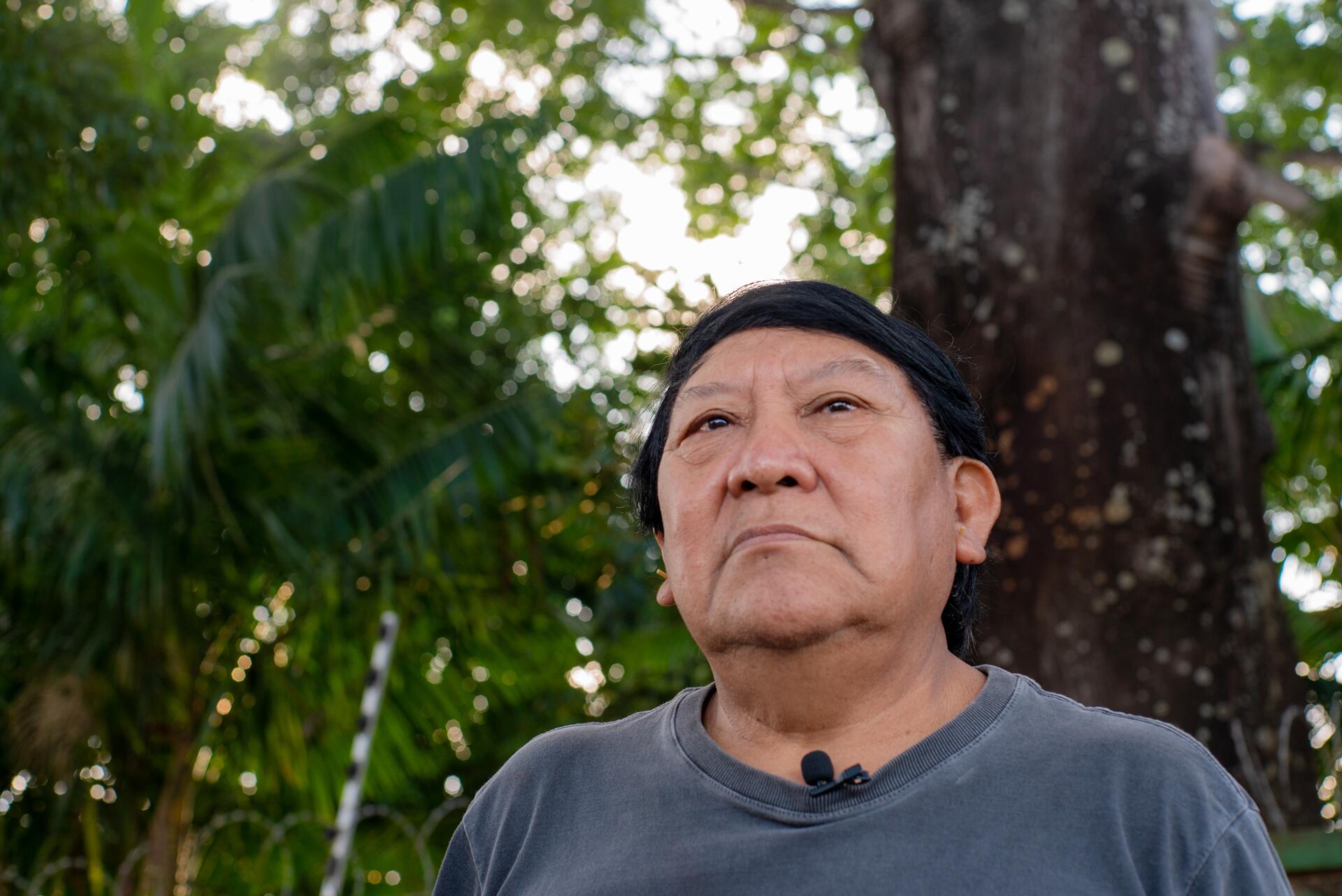
Yanomami leader Davi Kopenawa asks for respect: ‘The sumaúma is the one who calls the rain, who brings good energy to breathe, to not get sick. These trees are three powers.’ Photo: Adriana Duarte Bencomo/SUMAÚMA

